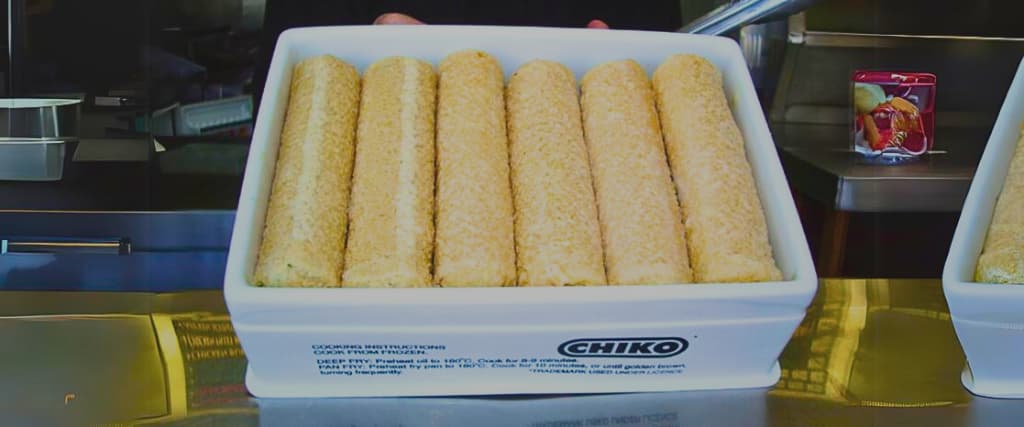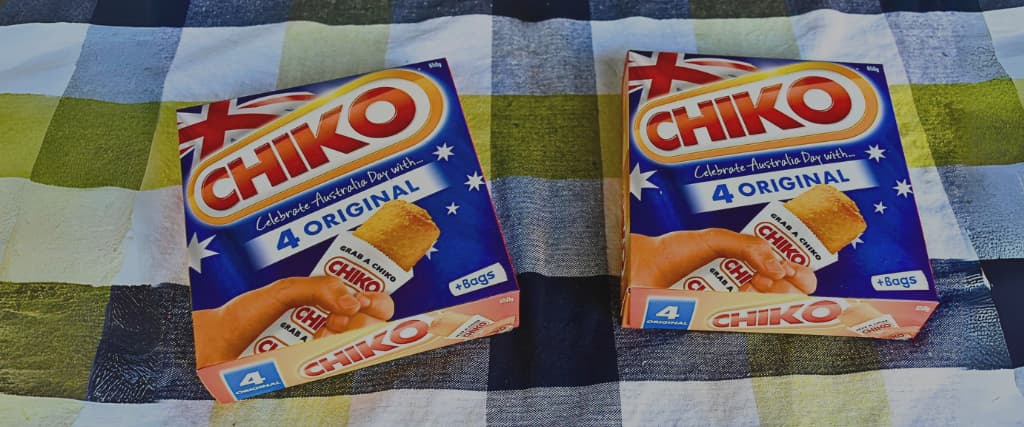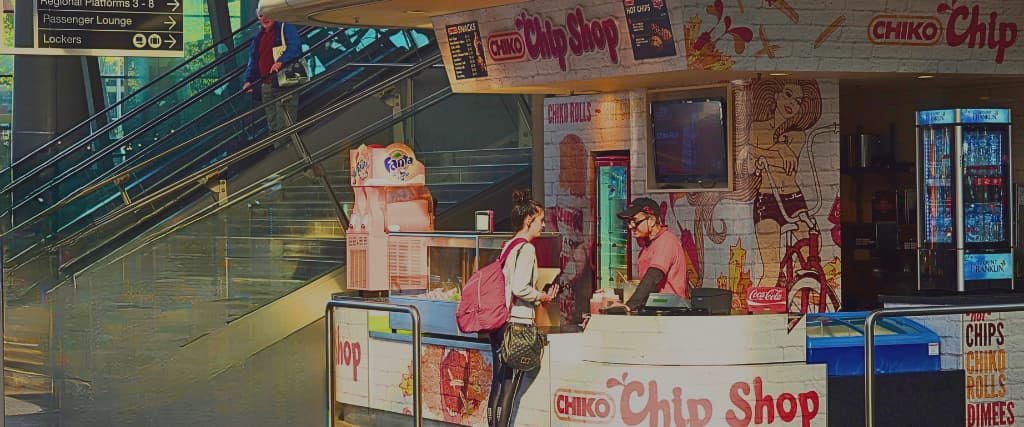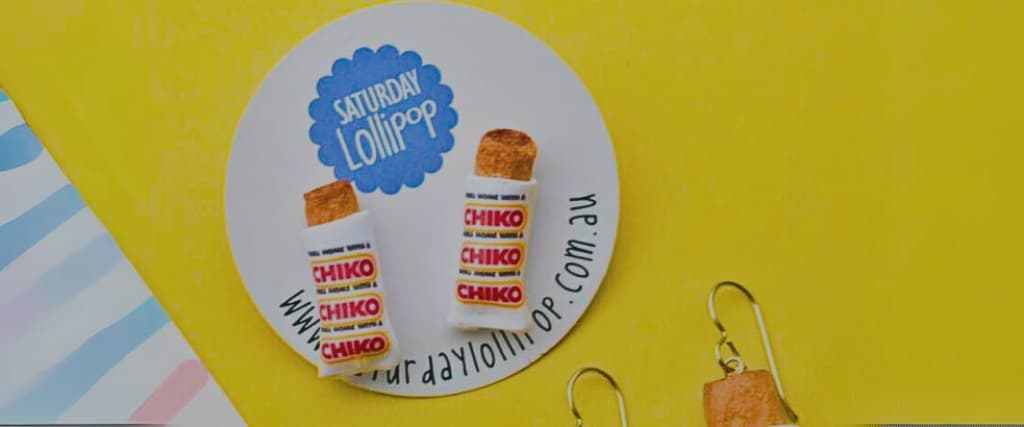The Italians have pizza. The Americans have burgers. The Mexicans have chilli con carne and the Indians, of course, have curry. While Australia doesn’t necessarily have a national dish as such, it could be argued that the Chiko Roll is the closest they come to it.
Invented by Frank McEncroe, a boilermaker from Bendigo in Victoria, The Chiko Roll is an institution in Australia. A savoury snack that was inspired by the Chinese spring roll, it was first sold in 1951 at the Wagga Wagga Agricultural Show in New South Wales.
An instant success, it was originally designed to be eaten in one hand whilst watching AFL games. However it also proved perfect for the Wagga Wagga event too, because those people who bought one inadvertently advertised McEnroe’s new culinary invention, as they milled around the showground.
Originally called a ‘chicken roll’, despite ironically not having any chicken in it at all, the product has been manufactured by Simplot Australia since 1995.
What’s in a Chiko Roll?

A Chiko Roll is essentially an Aussie version of spring or egg rolls. Traditionally a deep fried food in vegetable oil, it possesses a thick egg and flour pastry that is formed into a long tube.
Contained within this pastry is a partially pulped filling that is predominantly made up of cabbage and barley. It also has a mix of carrot, green beans and beef, as well as beef tallow, wheat cereal, celery and onion.
According to the company’s official website the ingredients list reads as follows:
Vegetables (31%) (cabbage, carrot, celery, onion, green beans), wheat flour, water, cooked barley (water, barley), beef (4%), canola oil, wheat cereal, textured soy protein, salt, sugar, acidity regulators (450, sodium bicarbonate), hydrolysed vegetable protein (contains soy), spices (contains chilli), emulsifier (471), flavour enhancer (635), colours (102, 110).
Chiko rolls contain soy, wheat and barley, so they are not suitable for consumption by those who have gluten intolerances.
History of Chiko Roll

Although Frank McEncroe was a boilermaker by trade, he also sold food for over 20 years at AFL football matches, as well as other country events to supplement his income.
Legend has it that in 1950, he observed a competitor selling Chinese chop suey rolls outside of the Richmond Cricket Ground. So impressed by what he saw, he promptly decided to add a similar product to his own portfolio of catering products.
Apparently feeling that the Chinese rolls were a bit on the flimsy side, and thus not really suitable for eating at a sports ground, he decide to create something that was both larger and more robust, and therefore easier to handle.
At the same time he wanted to offer a catering item that would be quick to serve, substantial to eat and most importantly of all, taste really good.
Enlisting the help of his brothers, Leo and Gerry, they set about developing the food item in the local dairy factory where they worked.
After several phases of testing they eventually settled on a finished product, unveiling it to the general public at the Wagga Wagga Agricultural Show in 1951.
Apparently it was such a massive success, it completely sold out on the second day.
Popularity

From these successful beginnings the Chiko Roll’s popularity continued to grow.
As a result, in the 1960s McEncroe moved production to the Melbourne suburb of Essendon, whereupon a brand new manufacturing facility ensured the product was able to be mass produced.
A few years later he merged his company with another local business called Floyd’s Iceworks, to create a brand new operation called Frozen Food Industries.
Shortly after going public in 1963, Chiko Rolls began to be sold in fish and chip shops throughout Victoria. By 1965 it was sold in them all around Australia, under the strapline ‘Grab a Chiko’. A clever play on words that signified how easy it was for shop owners to take one from the freezer, cook it in the deep fat fryer and place it within its trademark sleeve.
Popularity for Chiko Rolls continue to spread like wildfire, especially in coastal areas where it soon became linked with the surfing scene. To the point that during the 1970s over 40 million of them were consumed every year in Australia, as well as one million in Japan.
Sadly Frank McEncroe died in 1979, aged 70, during the height of this success.
Marketing

Much of the success of the Chiko Roll was down to its clever marketing, and in particular its use of the ‘Chiko Chick’ in its advertising since its initial launch in the 1950s.
Sitting seductively astride a motorbike, with memorable slogans like ‘Couldn’t you go a Chiko Roll?’ and ‘You can’t knock the roll’, they clearly resonated with consumers.
So much so that vintage postages featuring Chiko chicks of years gone by, have now become collectors items. Often commanding high prices as treasured items of Australian memorabilia.
In 2008, in an attempt to update the raunchy image of the Chiko chick, to one that was more in tune with a wholesome ‘girl next door’ image, a nationwide campaign was launched to find a new figurehead.
Appropriately enough at the Wagga Wagga Showgrounds on 17th July 2008, a new advertising poster was revealed to showcase model Annette Melton as the brand’s new face.
Recent years

Since assuming control of the Chiko brand, Simplot Australia have moved production of the product to Bathurst in New South Wales – which is home to the world famous Bathurst 1000 Supercars race.
Chiko Rolls are now made in a specially designed manufacturing facility, that creates both the pastry and the filling at the same time in its iconic long form roll shape. The machine then automatically slices them and folds its distinctive ends into the shape we associate with it today.
Though not as popular as it once was, increasing choice and competition in the Australian takeaway food sector has seen sales decline to around 17 million individual Chiko rolls per year.
However, staying true to their roots, they still remain a popular choice of snack at sporting events, as well as within the surfing community. They can also still be bought at pretty much every fish and chip shop across the country too, in addition to most major supermarkets.
